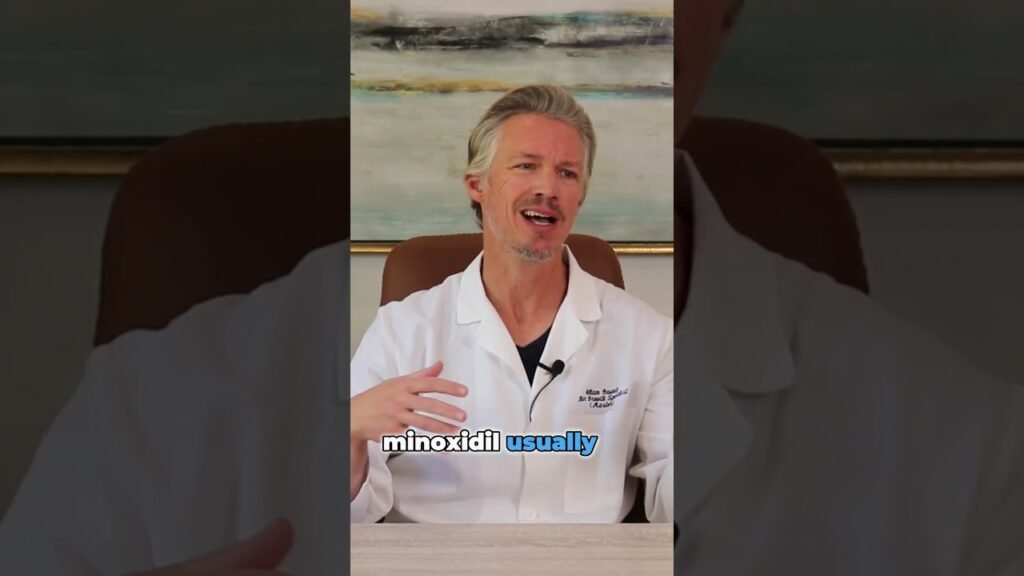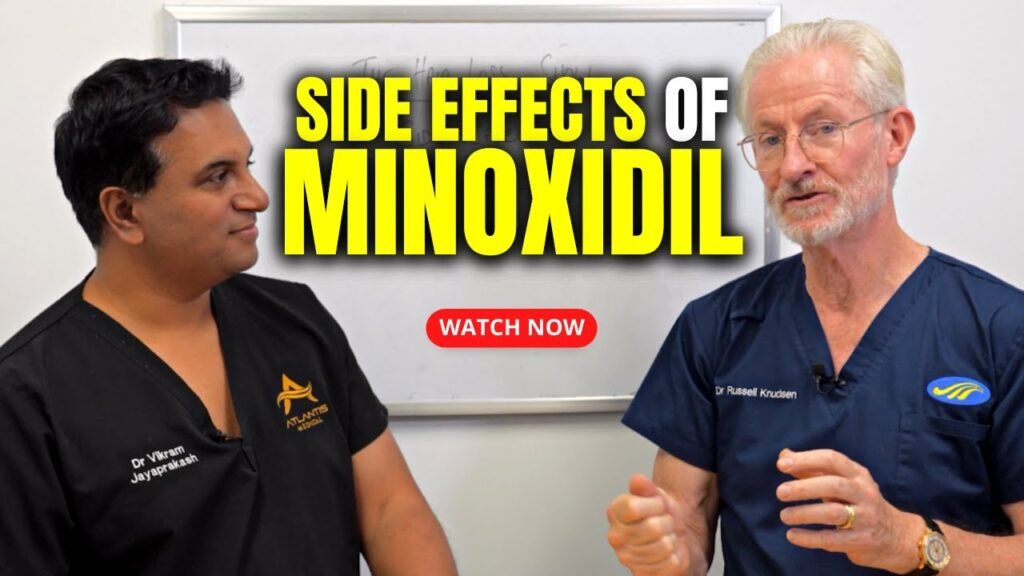Understanding the Side Effects of Minoxidil
Minoxidil is a popular over-the-counter treatment commonly used to address hair loss in both men and women. However, as with any medication, it is essential to be aware of the potential side effects associated with its use. Understanding these side effects can help users make informed decisions about their hair restoration journey and manage any unexpected reactions effectively.
Common Side Effects
Minoxidil is generally well-tolerated, but some users may experience mild side effects. These often include scalp irritation, dryness, or itching at the application site. It is also not uncommon for users to experience increased hair shedding initially, which can be alarming but is typically a temporary phase known as «shedding phase.» This occurs as the new hair growth cycle begins, and older hairs are pushed out. Users should monitor these reactions, as they usually subside with continued use of the product.
Less Common and Rare Side Effects
While less common, some individuals may experience more significant side effects when using Minoxidil. These can include unwanted facial hair growth, particularly in women, due to the systemic absorption of the medication. In rare cases, users might experience dizziness, rapid heartbeat, or swelling of the hands and feet. If any of these symptoms occur, it is crucial to discontinue use immediately and consult a healthcare professional to assess the situation and explore alternative treatment options.
Its important to note that while Minoxidil is an effective solution for many, individual reactions can vary. Users should always follow the recommended application guidelines and consider conducting a patch test before full application to minimize potential adverse effects. By staying informed and vigilant, individuals can maximize the benefits of Minoxidil while minimizing the risks associated with its use.
Is Minoxidil Safe for Long-Term Use?
Minoxidil is a popular over-the-counter treatment primarily used for promoting hair growth and combating hair loss. When considering its long-term use, its crucial to understand the safety profile of this medication. Generally, minoxidil is considered safe for long-term use when applied as directed. However, its important to be aware of potential side effects and to consult with a healthcare provider to ensure its suitable for your individual needs.
Potential Side Effects
While minoxidil is widely used and generally well-tolerated, some users may experience side effects, especially with prolonged use. Common side effects include scalp irritation, dryness, and flaking. In some cases, users might notice unwanted facial hair growth or changes in hair texture. Although rare, more severe side effects like rapid heartbeat or dizziness can occur, necessitating immediate medical attention. Its crucial to monitor any adverse reactions and report them to a healthcare professional.
Considerations for Long-Term Use
Before committing to long-term use of minoxidil, individuals should weigh the benefits against potential risks. Continuous use is often necessary to maintain hair growth results, as discontinuation can lead to a reversal of effects. Users should follow the recommended application guidelines and not exceed the advised dosage to minimize risks. Its advisable to have regular check-ins with a healthcare provider to assess the treatments effectiveness and make any necessary adjustments.
Common Side Effects of Using Minoxidil
Minoxidil, a popular treatment for hair loss, is known for its effectiveness, but it also comes with a range of common side effects that users should be aware of. Scalp irritation is one of the most frequently reported issues. This can manifest as redness, itching, or dryness in the area where the product is applied. Users may find it helpful to adjust the frequency of application or consult a healthcare professional if irritation persists.
Another common side effect is unwanted facial hair growth, particularly in women. This occurs when the minoxidil solution inadvertently comes into contact with other areas of the skin during application. To minimize this risk, users should carefully apply the product only to the scalp and wash their hands thoroughly after each use. Some individuals may also experience changes in hair texture or color, which, while generally harmless, can be unexpected.
Other Potential Side Effects
In addition to the more common side effects, some users may experience dizziness or a rapid heartbeat. These symptoms are less frequent but can be concerning. If you experience these effects, its important to discontinue use and seek medical advice. While rare, some individuals may also develop an allergic reaction to minoxidil, characterized by swelling, difficulty breathing, or severe rash. Immediate medical attention is crucial in such cases.
Its essential for users of minoxidil to monitor their bodys response to the treatment closely. Understanding these common side effects can help individuals make informed decisions about their hair loss treatment options and when to seek medical advice.
How to Minimize the Side Effects of Minoxidil
When using Minoxidil, a popular treatment for hair loss, its essential to take steps to minimize potential side effects. One effective strategy is to start with a lower concentration. Many users find that beginning with a 2% solution rather than the standard 5% can reduce the risk of irritation and other adverse reactions. Gradually increasing the concentration allows your scalp to adjust to the treatment, potentially minimizing the likelihood of experiencing unwanted side effects.
Another key approach is to maintain a consistent application routine. Applying Minoxidil at the same time each day can help your body adapt more smoothly to the medication. Its crucial to follow the instructions carefully, using only the recommended amount. Over-application can increase the risk of side effects such as scalp irritation and unwanted hair growth in other areas. Consistency not only enhances the effectiveness of the treatment but also reduces the chances of adverse reactions.
Incorporating a good scalp care regimen can further help in minimizing side effects. Regularly cleansing your scalp with a gentle shampoo can prevent the buildup of Minoxidil residue, which may cause irritation. Additionally, keeping your scalp moisturized can prevent dryness and flakiness, common side effects associated with Minoxidil use. Opt for non-comedogenic moisturizers that won’t clog your pores, and consider using products specifically designed for sensitive scalps. By taking these proactive steps, you can enhance your Minoxidil experience and maintain a healthier scalp environment.
Consulting a Doctor: Ensuring Safe Use of Minoxidil
When considering the use of Minoxidil, a topical solution commonly used for hair growth, consulting a doctor is a critical first step. This ensures that the treatment is appropriate for your specific condition and that any underlying health issues are addressed. A healthcare professional can evaluate your medical history and current medications to prevent potential adverse reactions. Since Minoxidil can interact with other treatments or exacerbate certain health conditions, a doctors guidance is invaluable in tailoring a safe and effective hair loss treatment plan.
Understanding Potential Side Effects
A doctor can help you understand the potential side effects of Minoxidil, which may include scalp irritation, unwanted facial hair growth, or dizziness. While many users experience minimal side effects, it is essential to be informed about what to expect and how to manage any adverse reactions should they occur. Your doctor can provide insights into how to monitor for these side effects and when to seek further medical advice. This proactive approach can help mitigate risks and ensure that Minoxidil is used safely and effectively.
Determining the Right Dosage and Application
The appropriate dosage and application of Minoxidil are crucial for achieving the desired results while minimizing risks. A healthcare professional can recommend the right concentration and frequency based on your individual needs and the severity of hair loss. They can also instruct you on the correct application technique to maximize efficacy. By following a doctors tailored advice, you can enhance the benefits of Minoxidil while reducing the likelihood of side effects or ineffective use.


